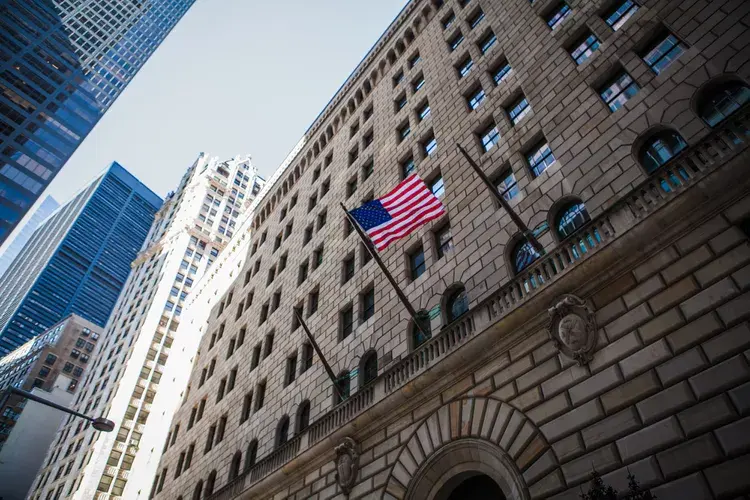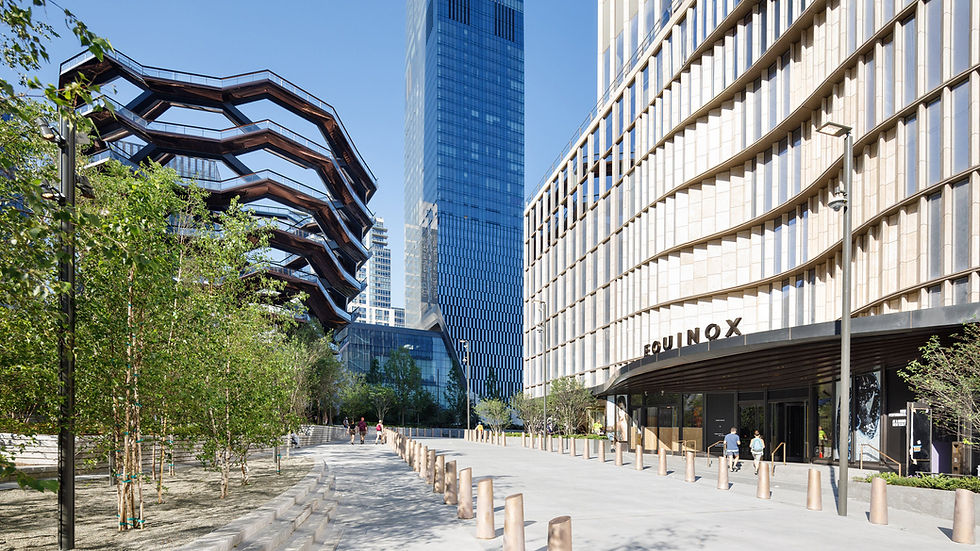Weekly Market Report - January 9, 2023
- Norman Bobrow

- Jan 9, 2023
- 5 min read
Updated: Feb 23, 2023
***
Some of the top office developers aren’t exiting the beleaguered sector, but they are beginning to cast their sights on other property types. Empire State Realty Trust, Boston Properties and SL Green Realty are among the prominent proprietors of office space buying and building real estate in other sectors as occupancy remains low and the post-pandemic future of the property type is uncertain. In the third quarter, there was 153 million square feet of office space under construction, according to CoStar. That’s significantly below the 184 million square feet being built in the first quarter of 2020, right before the pandemic reared its ugly head. The apartment pipeline is moving in the opposite direction. Nearly 500,000 units were completed last year, the most since 1986.
In 2019, fewer than 370,000 multifamily units were completed. The economic reality for many developers is that residential properties are in greater demand than office properties and those projects or acquisitions pencil out in a more advantageous way. Boston Properties, the largest public owner of office space in the country, is developing 2,000 residential units along the East Coast. It has also pushed resources into life sciences development. SL Green is in New York’s casino sweepstakes, partnering with Caesars on a proposed casino. Silverstein Properties is raising more than $1 billion in an effort to convert offices into residential properties, aligning with New York City’s mayor. New York City REIT recently announced it would start making alternative investments, not only outside of its core market, but outside of its core property type (offices) as well.
***
More than 76 percent of office occupants who have moved in Manhattan since the start of the pandemic have either gone from one Class A property to another or upgraded to a Class A building from a Class B one. Tenants in the technology, advertising, media and information sectors in particular are increasingly upgrading to newer spaces, CompStak found. While 37 percent of companies in those fields moved between Class A buildings during the pandemic, another 27 percent have moved up from Class B to Class A spaces. All told, 65 percent of TAMI occupants moved to a building that was newer than their previous location, with an average age difference of 40 years.
The largest share of relocations during the pandemic, 46 percent, came from tenants in the financial, insurance, real estate and legal sectors. While these tenants typically occupied Class A buildings before the pandemic, about 64 percent of their moves were similar to newer buildings newer than their previous locations, also by an average of 40 years. Nearly a third of all relocations since the onset of the pandemic have been to office buildings that were constructed or renovated since 2015. Some of the largest TAMI tenants over the past year include IBM taking 328,000 square feet at SL Green’s One Madison Avenue and Roku signing on for 240,000 square feet at RXR Realty’s 5 Times Square. Not all relocations have been aimed at reducing or consolidating space, either. Among leases larger than 75,000 square feet, exactly half of office tenants who moved during the pandemic increased their footprints, CompStak found. Forty-two percent downsized to smaller spaces, while the remaining 8 percent moved to similarly sized offices.
Asking rents for Class A space in Manhattan averaged $81.51 per square foot in the fourth quarter, up from $81.41 a year ago and down just 3 percent from the $84.05 recorded at the end of 2019. Asking rents, however, do not reflect the effective rent paid by tenants after factoring in concessions.
***
Older office buildings — especially in Lower Manhattan and Midtown — continue to struggle to fill their space, just as residential rents in the city are hitting record highs. Commercial easing activity in Manhattan dropped nearly 47 percent on a quarterly basis in the last three months of 2022. What’s more, the June 2022 expiration of the 421a tax exemption for new affordable residential projects means fewer developers will start new apartment buildings until the state legislature creates a replacement.
In the last few months, developers have announced several major office-to-residential projects Downtown. GFP Real Estate is overseeing the conversion of the 22-story 25 Water Street, formerly known as 4 New York Plaza, into 1,300 apartments. Silverstein Properties is converting the 33-story 55 Broad Street into 571 apartments. And Fortress Investment Group is looking to redevelop the 30-story 85 Broad Street — formerly Goldman Sachs’ headquarters — into housing. So what makes an office building appealing for a residential conversion? Smaller floor plates certainly make it easier to carve out apartments, but developers have found ways to address that challenge. At 25 Water Street, GFP is drilling two light wells into the building to produce more legal bedrooms (which must have natural light, according to state code).
The developer is also adding an extra 10 stories to the top of the building, allowing more light and air for apartments and opportunities to turn setbacks into roof decks. All of the conversion projects underway in the Financial District right now are set to be as-of-right, market-rate rentals, because developers say there isn’t an incentive to include more affordable, below-market housing.
The city and state created a tax abatement program for office-to-residential conversions in the mid-1990s, hoping to stem Lower Manhattan’s flood of empty office buildings. The program, known as 421g, offered landlords a significant tax break in the decade or so following an office-to-residential conversion. In exchange, they were supposed to give tenants rent-stabilized leases, though many owners were sued in recent years for failing to do so. During the decade the program was in effect, from 1995 to 2005, owners used the abatement to convert 13 million square feet of offices to 12,865 apartments.
***
The U.S. warehousing market is retrenching heading into 2023, a turnaround from the pandemic-driven boom in industrial real-estate demand as companies slow down decisions on new storage and distribution space amid fears of a recession. Companies leased 132 million square feet of industrial space across the U.S. in the fourth quarter, down 28.2% from the third quarter. That was the second straight quarter-to-quarter drop in leasing. The pullback follows several years of frenetic expansion in warehousing construction and leasing as a surge in online shopping driven by the Covid-19 pandemic pushed companies to snatch up space to get goods closer to consumers. Retailers have been pulling back on their inventory restocking since the middle of last year, however, and companies that were once scrambling for space are rethinking logistics expansion.
Amazon.com Inc. doubled the size of its fulfillment network in 24 months as its business surged. But the e-commerce giant last year started paring back growth in its warehousing operations and began to sublease some of its space as e-commerce growth slowed. Amazon on Wednesday said it is planning to lay off more than 18,000 employees, mostly in its corporate ranks, as it seeks to cut costs as online sales growth has retreated. The warehousing market remained tight in the fourth quarter even as the vacancy rate ticked up to 3.3% from 3.1% the prior quarter. That was the second-straight quarter that vacancy increased after two years of tightening availability, but the empty space remains far below the 5% average vacancy rate in 2020. For the full year, companies leased a net total of 756.8 million square feet of industrial space in 2022, down 18% from the year before.
The leasing slowdown raises the potential for a glut of new warehouse space in the coming months, with 682.6 million square feet of new development in the construction pipeline, Ms. Salzer said. About 83% of the new space is being built without tenants lined up, known in the real-estate sector as speculative projects.









Comments